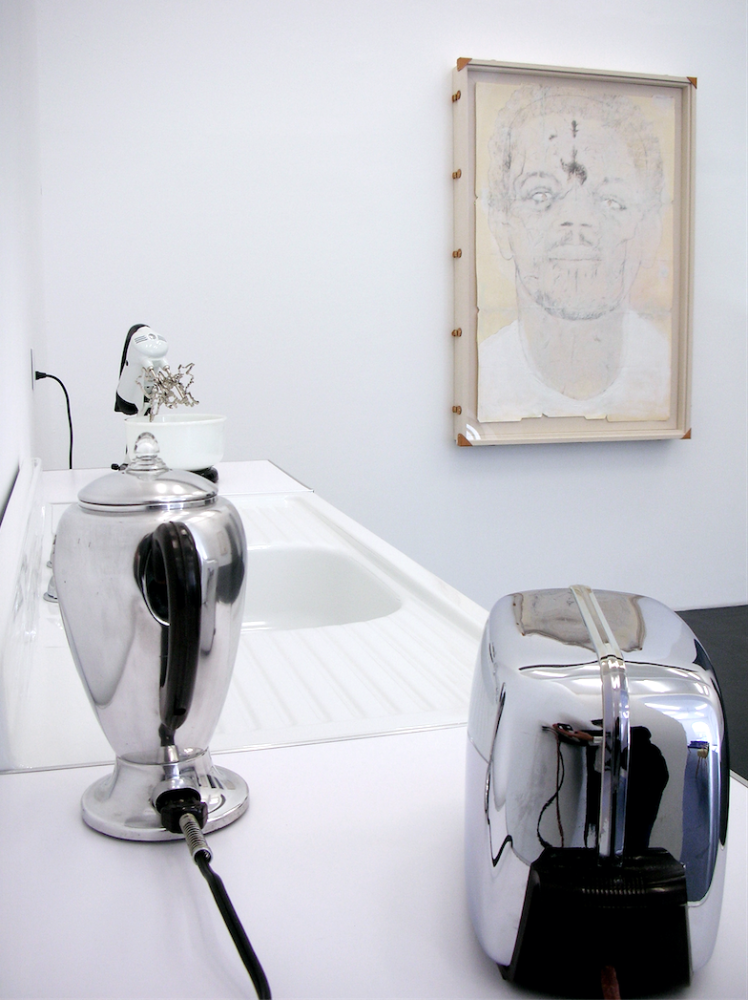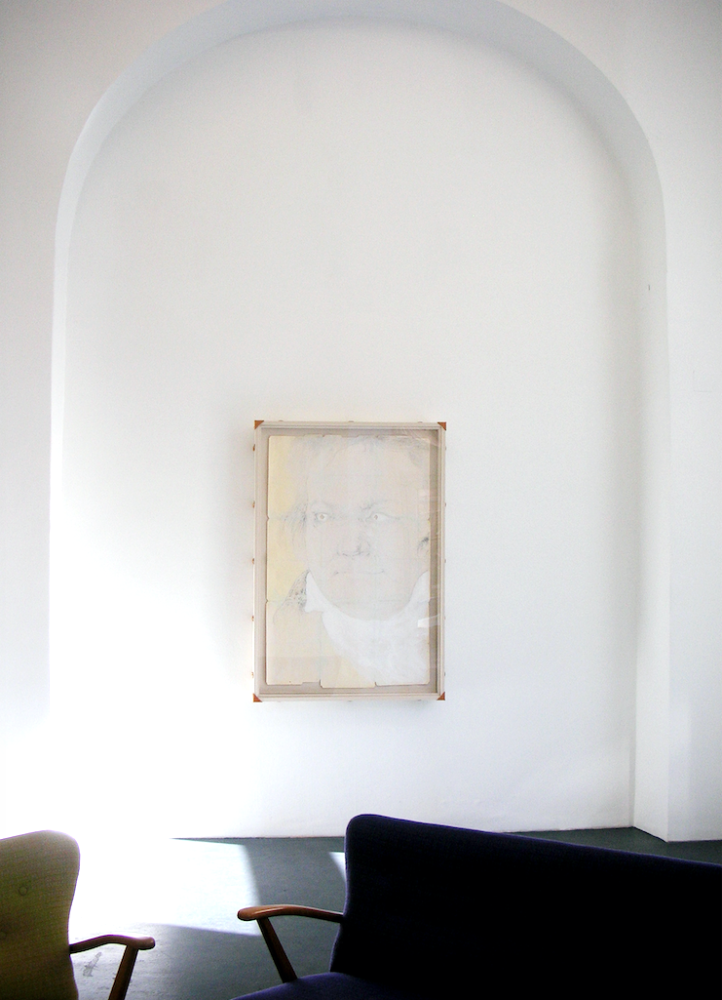silvia steinek galerie curated by Julien Robson
„It's Not What You Think“
21.9. - 25.10.2012
Press release 

silvia steinek galerie, Eschenbachgasse 4, 1010 Vienna
www.galerie.steinek.at
www.galerie.steinek.at
Curator(s):
Julien Robson
More 

* 1955 in Scotland, lives and works in Philadelphia, USA Julien Robson is curator of Contemporary Art at the Pennsylvania Academy of the Fine Arts (PAFA). His many exhibition projects include here., which explored the role of the regional in a globalized art world, and Presence, a two year long project that included works by Franz Gertsch, Bill Henson, Mark Wallinger, Gerhard Richter and Berni Searle among others. He is currently working on a retrospective exhibition exploring the many aspects of artist and filmmaker david Lynch’s practice.
Artist(s):
- Mel Chin
Exhibition text
More
"It´s Not What You Think"
Mel Chin
curated by Julien Robson
20.09.-03.11.2012
Its Not What You Think
Mel Chin is best known for his collaborative and cross-disciplinary artistic investigations into social, political, and ecologically charged topics. Weaving art and life together, he aims to reveal and help remedy the social and environmental toxicity that surrounds us. Objects, drawings, and videos in Chin’s exhibition explore the dissociative nature of contemporary American life, where tension and conflict ferment beneath the repressive myths surrounding freedom, patriotism, and social unity.
It the center of Chin’s exhibition Its Not What You Think is the installation Ill-posed Inverse Problemware, a 1950s style kitchen with three iconic appliances, all of which are not quite right. Advertised as “Automatic Beyond Belief,” Sunbeam kitchen appliances, like the many streamlined products designed in 1950s America, were marketed as objects that would make the housewife’s life not only easier but more stylish. In Chin’s hands these objects become altered “readymades” that speak to a contradiction in American culture, namely that, as objects of consumption, they are not only ciphers of desire but also representations of sexual repression. Taking this further, Chin has symbolically altered the kitchen sink into a passive and dysfunctional female vessel, complete with vagina and anus, the phallus taking on the guise of the faucet.
For many years Chin has been occupied with issues of land pollution and the extent to which toxic chemicals have been left as industrial waste in the soil of major cities in the United States. In blighted cities like Philadelphia, Cincinnati, Cleveland, Detroit, and New Orleans, heavy metals in the environment pose a serious threat to populations that already suffer through poverty, lack of jobs, and the accompanying breakdown of the social fabric. Affecting the health of children, the high levels of heavy metals found in these cities are understood to destabilize the mental and emotional development of individuals, and some recent studies have come to the conclusion that there is a direct link between inner city violence in America and the residues of lead found in post-industrial cities. Chin’s three drawings address the biopolitics of lead in the body, and the association of lead with a host of medical problems, stunted mental development, and antisocial behavior. They are portraits that represent differing destinies and that toy with the fine line that divides madness and genius.
William (Dark Reaper)
William Garner was convicted of murdering five sleeping children in Cincinnati, in January 1992. Stealing a house key from their mother, he broke into their home and stole a number of small domestic appliances, including a TV, a DVD player, and a telephone. Upon leaving, he set the fire in which the children perished. After his arrest, a psychologist who interviewed Garner said he functioned at the level of a 14-year-old, and his IQ tested at 76, barely above the juridical cutoff mark for mental retardation. Citing his “extremely violent and dysfunctional” upbringing, his attorneys argued hat he was brain-damaged due to lead poisoning, leading him to act both violently and irrationally. Pleas for clemency were turned down and Garner was executed with Ohio’s one drug lethal injection protocol on July 13th, 2010. Chin uses his lead pencil to mark out the areas of the brain that are affected by lead.
Lud-Wig
While in the 19th century lead was already known to be toxic, it was often used in medicine in small doses to help treat ailments. Detecting toxic levels of the metal in fragments of Beethoven’s hair and bone, in 2007 Viennese forensic expert Christian Reiter proposed that, in attempts to ease the composer’s suffering, Beethoven’s doctor might have precipitated his death by repeatedly puncturing
his abdominal cavity and then sealing the wound with a lead-laced poultice. Recent research refutes this theory but acknowledges that Beethoven’s body would have been acutely intoxicated with lead by these procedures. This information has been employed by some Beethoven scholars to explain the composer’s infamous temper and his occasional memory slips, an argument that could easily be stretched to suggest that the destabilizing effects of lead contributed to his genius. The lines of Chin’s drawing suggest the fragments of hair that were analysed by Reiter and others.
Al (White Reaper)
Albert Dunlap was a champion of “downsizing,” a businessman who would take over companies, strip them down, and return them to the market. Dubbed “Chainsaw Al,” he believed that the primary goal of any business should be to make money for its shareholders and, during the 1990s, he was celebrated for streamlining manufacturing businesses, firing thousands of workers at once and closing manufacturing plants. Dunlap’s fall came with the Sunbeam company, known for its iconic domestic appliances such as toasters and food mixers. Appointed CEO in 1996, Dunlap’s obsessive application of his mantra to Sunbeam turned out to be a scam, leading the company into bankruptcy in 2001. Shortly after, the U.S. Securities and Exchange Commission (SEC) sued Dunlap and four other Sunbeam executives, alleging they had engineered a massive accounting fraud. There is no record that Dunlap suffered from lead poisoning, but he had a manipulative, ruthless, and destructive personality. One business journalist noted that “Dunlap sucked the very life and soul out of companies and people. He stole dignity, purpose, and sense out of organizations and replaced those ideals with fear and intimidation." Chin’s drawing marks out the plunge in Sunbeam’s stock during Dunlap’s tenure as CEO on the subjects forehead.
9-11/9-11 is a hand drawn animated film that speaks to two violent historical events through a romance between a Chilean man and an American woman. While September 9, 2011 is etched into the American consciousness as the defining moment of the new century, the nation’s memory of its own historical manipulation and support for terror lies buried beneath its narcissism. In Chile, September 9, 1973 marks the day when democracy gave way to the terror of Pinochet’s military dictatorship with the covert support of the CIA. Chin’s weaves these events together in the relationships between his characters.
Revisiting an idea the artist pursued during the Bush presidency, S-O-S asks the people of the Bronx, New York, to speak to President Obama about their hopes and fears. As they stand before the camera their words appear as tickertape commentary at the bottom of the screen, each portrait accompanied by the sound of the individual’s heartbeat.
Photos
Mel Chin: Exhibition view_It is not what you think_Curated by Julien Robson_artworks by Mel Chin
on the wall : Mel Chin, From the „Lead Point Portraits“ Serie , 2012 William (Dark Reaper), 2012
© Carol Tachdjian



